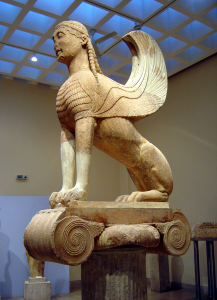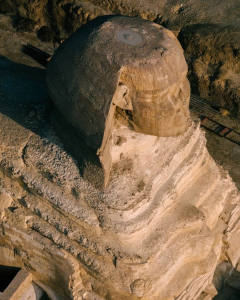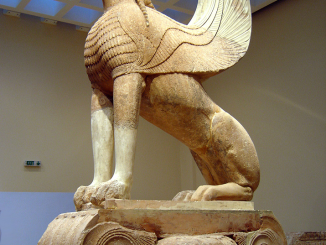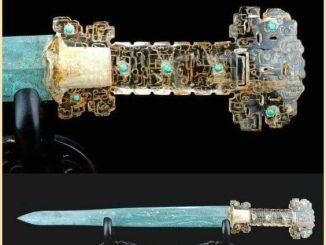In the pantheon of Greek mythological creatures, the Sphinx holds a special place, known for its role in legends and as a symbol of protection and wisdom. One of the most renowned representations of this enigmatic creature is the Sphinx of the Naxians, which once towered over the Sanctuary of Apollo at Delphi, dating back to around 560 BC.
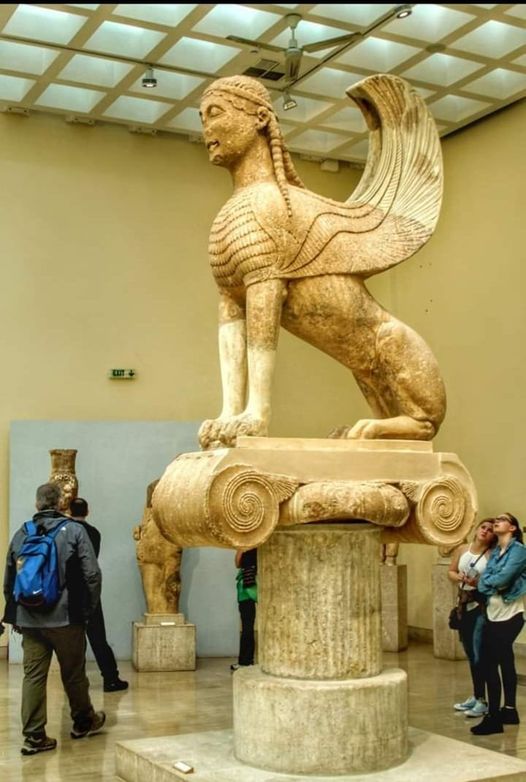
The Sphinx of the Naxians was a votive offering from the people of Naxos to the Oracle of Delphi, reflecting their reverence and piety towards the gods. This majestic sculpture was originally perched on a 10-meter high column, next to the Temple of Apollo, serving both a decorative and a protective role. Positioned high above the temple complex, the Sphinx overlooked the vast landscape, watching over the countless pilgrims who visited this sacred site to seek guidance from the Oracle.
The photograph beautifully captures the intricacy and artistry of the Sphinx, now housed in a museum setting. The figure combines the head of a woman, the body of a lion, and the wings of a bird, symbolizing intelligence, strength, and swiftness, respectively. The face of the Sphinx, with its serene expression, exudes a sense of calm wisdom, while the muscular body and expansive wings convey power and protection.
The craftsmanship of the Sphinx of the Naxians is a testament to the artistic skills of the Naxian sculptors of the period, known for their ability to work with marble, a material that lent itself to the fine detailing evident in the coiled mane and feathered wings of the sculpture. The Naxians, taking advantage of their rich marble quarries, contributed this and other works as signs of their wealth and religious devotion.
In its original setting, the Sphinx served as a beacon for those seeking the prophetic insights of Delphi, believed to be the navel of the world in ancient Greek culture. Its placement on a high column not only made it a focal point of the sanctuary but also integrated it into the sacred landscape, visible to all who approached the temple.
Today, the Sphinx continues to fascinate historians, archaeologists, and visitors, representing a link between the human and the divine. Its current preservation in a museum allows for closer inspection of its details and a better understanding of its cultural and religious significance. The Sphinx of the Naxians remains a powerful reminder of the religious life of ancient Greece and the artistic endeavors that were carried out in the name of faith and in awe of the divine.
As it stands now, removed from its original towering perch but no less imposing, the Sphinx of the Naxians invites onlookers to ponder over its past mysteries and the ancient world’s artistic and spiritual complexities. This enduring artifact continues to be a symbol of the cultural richness and historical depth of ancient Greek civilization.
